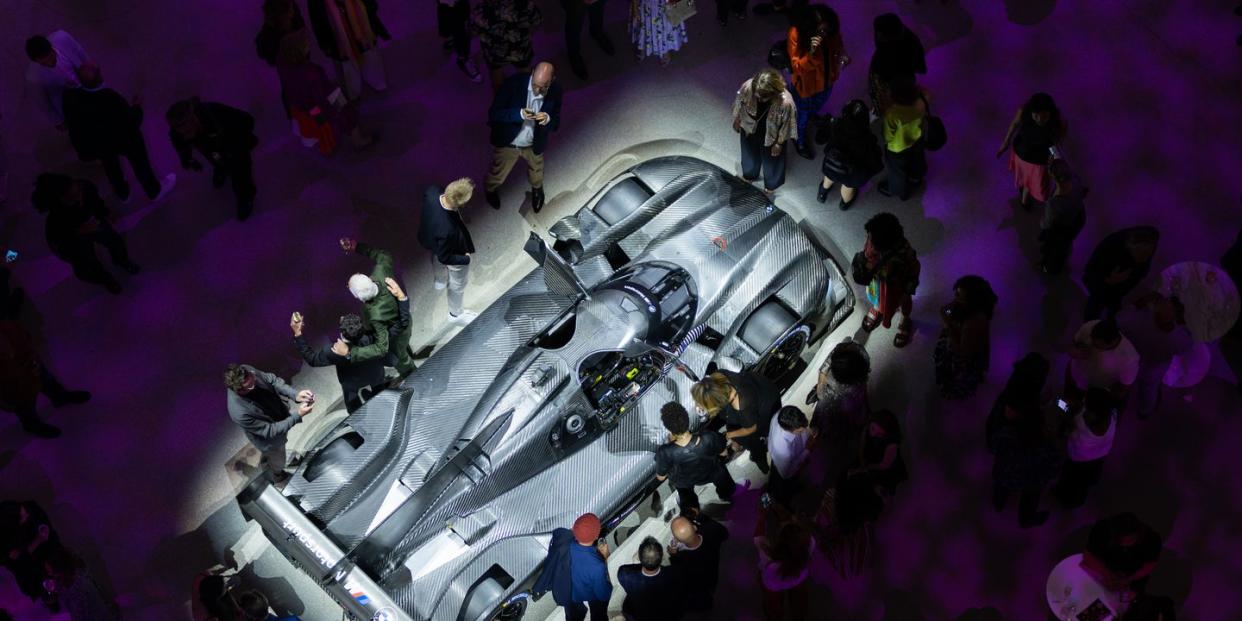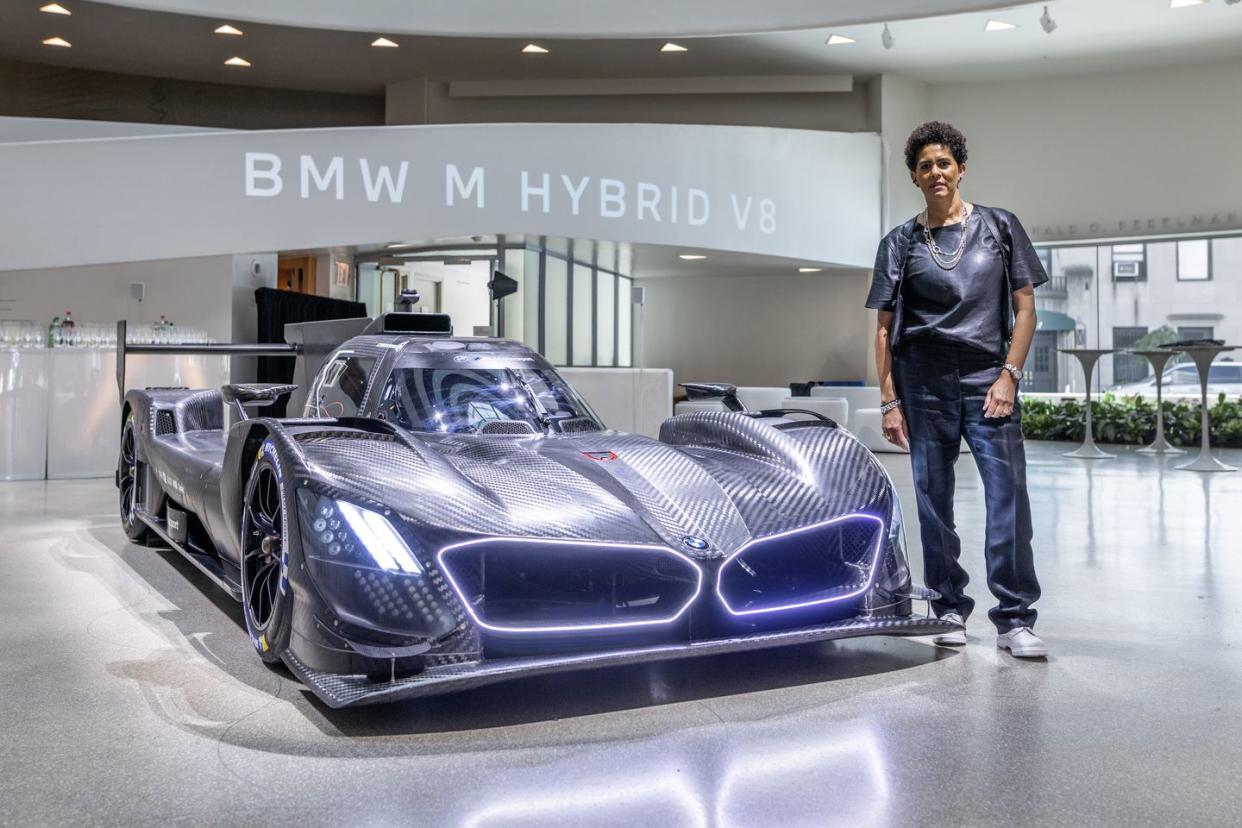Here's BMW M Hybrid V8 Art Car Nude in Carbon Fiber

There's a new BMW art car coming, once again a race car (like the first art car from Calder) and once again a top-flight prototype (like the V12 Le Mans Roadster from Jenny Holzer) and it's the M Hybrid V8, painted by Julie Mehretu.
Of course before the M Hybrid V8 can get painted, it must be a bare canvas, so we get to see the thing in its raw carbon weave. It's wonderful to see the plain shape of these cars, low and wide and flat. That BMW set the car up for its photo shoot at the base of the Guggenheim, a curlicue turned into a building, only makes it look lower and wider and flatter.

It's not like I dislike the paint scheme that these cars run on track, a pretty straightforward white background accented with the BMW M red/blue/purple. I hate to make this entire piece an aside, but the BMW M colors are themselves somewhat mercurial, as they originally were red, blue, and a slightly different blue (but not purple). What these colors stood for I myself was never able to find a clear answer about. BMW's own historian's official explanation makes little sense, saying that the blue stood for BMW, the red stood for Texaco, and the other blue stood for (??). This is slightly rebuffed as BMW race cars were backed by Castrol (which used green as its color) and it never inked a deal with Texaco (which ran red and black). From BMW:
Marc Thiesbürger, car and racing historian for BMW Group Classic, can draw on various archive sources and recorded recollections from those who were there. According to his interpretation of the color combination, the blue stands for BMW, the red was likely inspired by Texaco and the violet was chosen as a blend of the two. When asked about the story behind Texaco, he says: “It is very likely that the red in the BMW Motorsport color scheme represented Texaco, despite the fact that sponsoring negotiations with the company broke down at the end of 1972 and the deal never came to be.”
Thiesbürger considers this plausible due to the fact that Seehaus had already incorporated the Texaco logo into new racing car designs in 1972, as backed up by various design drawings in the BMW Group archives. This was at a time when BMW was participating in racing events with the support of Castrol—whose logo was the familiar green. According to Thiesbürger, it was unusual to add in the red just as negotiations with Texaco were beginning, but could perhaps have been an attempt to win the company over.
Whatever the story of the original M colors, I'll be excited to see what Julie Mehretu turns out with this new car, fresh off its victory at Watkins Glen.
You Might Also Like
